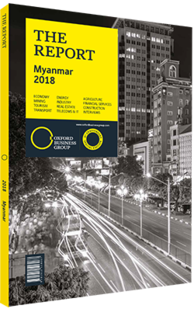Reforms to bus services to reduce congestion in Yangon
Rapid urbanisation and robust economic growth have had a notable impact on urban mobility in Yangon. Traffic congestion is rising to become an increasingly pressing concern for businesses and commuters, especial as the city’s population is set to grow from 7.4m in 2017 to more than 10m people by 2030. The government is currently undertaking reforms to streamline and consolidate its massive public bus network; however, recent moves to launch a bus rapid transit (BRT) service and consolidate fleets and routes have had a mixed impact. The absence of dedicated bus lanes and confusion over new services continues to pose a challenge for the public transport system, leading authorities to look for new ways to improve it.
Yangon Bus Service
While efforts are under way to expand the circular rail line and expand water taxi service, revamping the city’s public bus system remains the most important priority. Buses remain the most popular form of public transport in Yangon, accounting for nearly 50% of total public transport ridership as of 2016, according to the Asian Development Bank (ADB).
As part of the government’s ongoing reforms, the Yangon Region Transport Authority (YRTA) launched Yangon Bus Service (YBS) in January 2017, effectively replacing the Yangon Region Supervisory Committee for Motor Vehicles as the main agency responsible for overseeing public bus transport.
The YBS implemented sweeping changes. The number of routes was reduced from over 300 to 71, and the total number of public buses operating in Yangon was reduced from over 4000 to around 2000, including the decommissioning of 1100 older buses. Fares were standardised and capped at MMK200 ($0.15), while the total number of private companies operating bus services was reduced to eight, all of whom are operating under a public-private partnership (PPP) model.
System reforms nonetheless encountered many problems on launch. Commuters reported longer transit times, with some spending over four hours travelling per day, and others paying more than double their normal fare. Additional complaints pointed to inefficiency caused by bus drivers and conductors reportedly breaking traffic rules and regulations. Sustained complaints led the Yangon Regional Parliament to approve additional proposals aimed at improving YBS services in April 2017. Changes included increasing the number of buses and strengthening the enforcement of BRT regulations. Daw Nilar Kyaw, the Yangon regional minister of transport, told local media in April 2017 that the ministry had acted on 6000 cases regarding inefficiencies and traffic violations. New routes were also added, bringing the total number back up to 86 by August 2017. The YRTA has also announced plans to add up to 1000 modern buses to the YBS system, supported by MMK60bn ($45.8m) of government funding.
Rapid Transit Lite
Officials have been looking at other ways to reduce traffic congestion. Coordinating with the Japan International Cooperation Agency, the government developed plans to build a BRT system with dedicated lanes in 2013. In February 2016 the BRT Lite system officially launched services with a fleet of 18 modern buses and 23 stops connecting Htauk Kyant to 8 Mile Junction along the Pyay and Kabar Aye Pagoda roads. Despite the lack of segregated lanes, BRT Lite buses have the right-of-way and service only major stops. The fleet was expanded to 45 buses in May 2016, with authorities announcing plans to procure an additional 20 new buses that month. The system was established under a joint PPP signed with the Yangon PPP Company, a consortium of five private companies, and operates as the Yangon Bus Public Company. The BRT Lite also falls under the supervision of the YBS.
According to the ADB, adding segregated bus lanes would cost around $5m per km, compared to $20m per km to upgrade the city’s circular rail line. Moving forward, establishing such bus lanes could become a major priority for the government to provide the most cost-effective method to manage rising congestion.
You have reached the limit of premium articles you can view for free.
Choose from the options below to purchase print or digital editions of our Reports. You can also purchase a website subscription giving you unlimited access to all of our Reports online for 12 months.
If you have already purchased this Report or have a website subscription, please login to continue.

